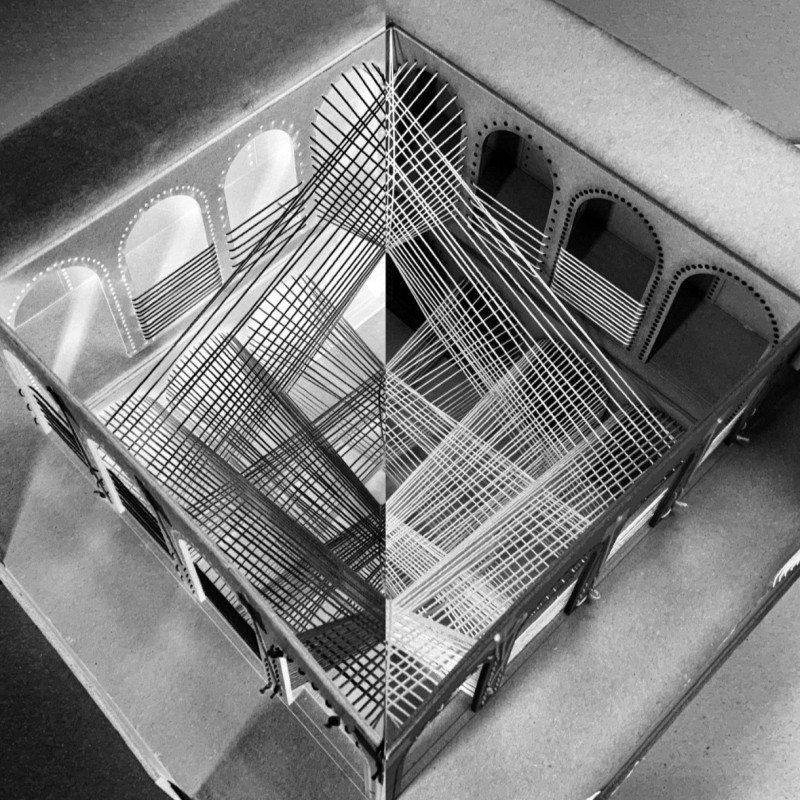5 key facts about this project
The design situated in Havana, Cuba, reinterprets the traditional courtyard to meet the needs of blind inhabitants while allowing for interaction with sighted neighbors. This approach emphasizes inclusivity and engagement with the environment, resulting in a living space that balances community and individual comfort. Central to the design is the concept of "Occluded Projection," which enhances the home experience for visually impaired residents while preserving the cultural essence of courtyard living.
Conceptual Framework
Lines of projection are utilized to convey the complexities of the courtyard’s physical environment. The placement of architectural elements, such as arches and columns, enriches the tactile experience for residents. This design strategy allows blind inhabitants to explore their surroundings through touch, deepening their understanding of space. Projections serve to affirm physical presence while connecting to the broader environment, presenting an innovative take on traditional courtyard layouts.
Privacy and Interaction
Considerate design promotes privacy for blind residents. By blocking sight lines from nearby areas, a secure and comfortable atmosphere is created. This setup enables blind inhabitants to engage with their environment while maintaining a personal space. The arrangement supports a community-friendly setting where personal boundaries are respected and valued.
Sensory Engagement
The approach prioritizes diverse sensory experiences in architecture. It allows residents to explore connection without sacrificing their privacy. By recognizing that architecture can stimulate various senses, the design invites all individuals to appreciate communal life while addressing specific needs. Each space not only serves a function but also promotes interaction and comfort.
The implementation of projection lines extends past mere architectural elements. They act as tactile guides, leading residents through a thoughtfully arranged environment. This design invites exploration while fostering a sense of belonging within the community. Each element provides an opportunity for connection, creating an engaging and thoughtful living area that nurtures individual preferences.



















































